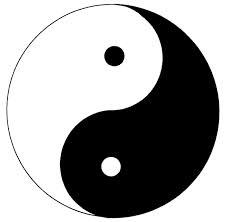
The wave equation can readily be solved for a particle in free space. If we assume that there is no potential energy, then the kinetic energy or hamoniltonian operator is the only term we need to consider. In this case we can express the wave function in free space in the form eikx for a particle traveling to the right along the x direction and e-ikx for a particle traveling to the left. The value k is the wave vector, which represents both the vectorial direction of motion and the spatial properties of the wave function. The wave vector is related to the wave length, k = 2 pi / lamda. In free space k can take on any value and there is no quantization.
Boundary conditions
By trapping the particle in a region of space, the solutions are restricted by boundary conditions. If we assume that the praticle is in a region between 0 and L along the x axis and that the potential energy is infinite outside those limits, we find that the wave function must have a zero value at both of the limits. Because of this restiction the wave function must have the of a sine function. The function sin(kx) is 0 at x = 0, which is one requirement of the boundary condition. The second condition is the sin(kL) = 0. This means that kL = n Pi, which is crucial since this defines the wave vector k in terms of a quantum number.. Thus, in a bound state there is quantization.
Free vs. bound states
Found states are the most interesting for chemical applications since molecules represent stable bound state structures. The particle in a box and a related problem known as the particle on a circle provide two approximate methods to study the properties of molecules without requiring the full quantum mechanical treatment of their eneergies. Since our goal in this class is an understanding of spectroscopy. The two models of bound states are known as the free electron model. This name comes from the fact that there is no potential energy in problem, yet there are constraints on the motion that force both box and circular systems to be quantized.
Properties of the free electron model
- This model is most often applied to pi-systems. This includes polyenes as linear molecules and aromatic molecules (which obey the 4n + 2 rule) for particle on a circle models.
- Add the appropriate number of electrons, one electron for each p-orbital in the system. Fill the energy levels using spin-paired electrons. This combines the Pauli exclusion principle with the known solutions to give realistic energies.
- Transitions are assumed to occur from HOMO to LUMO.
- The shape of the wave function can be described using the particle in a box/circle wave functions as a guide to the magnitude and sign of the coefficients.
|